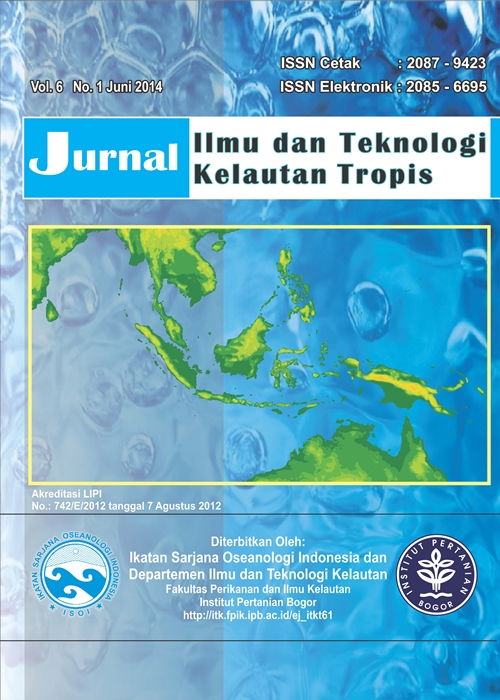MICROHABITAT PREFERENCE OF SEASTAR IN HARI ISLAND WATERS, SOUTHEAST SULAWESI
Abstract
The objective of this study was to explore the information on the microhabitat preference of asteroidea in Hari Island Waters, Southeast Sulawesi. The specimens were collected in August 2012 and December 2012. The methods used in this study were road sampling technique, freehandpicking, and observation. The geographical coordinate position of the asteroidea and microhabitat were recorded by using GPS and then mapped by using the ArcGIS 10.1. Asteroidea map was overlayed with microhabitat map to determine the microhabitat preference. The study found 9 species of asteroidea belonging to 7 generas, 4 families, and 2 orders. All the asteroidea were relatively common species in the tropical shallow waters. The species were distributed along sides of the island with majority found in the northern side. The dominant species, Linckia laevigata, was found in all microhabitat which had beed adapted to various microhabitat conditions and water fluctuation. Based on area of distribution and population density, seastar tended to use reef coral as its microhabitat preference since reef coral could serve as a food source and habitat protection.
Keywords: Seastar, microhabitat preference, Hari island
Downloads
The author submitting the manuscript must understand and agree that the copyright of the article manuscript must be submitted/transferred to the Jurnal Ilmu dan Teknologi Kelautan Tropis. This work is licensed under the Creative Commons Attribution-ShareAlike 4.0 (CC BY-SA) International License in which the Author and Reader can copy and redistribute the material in any media or format, and remix, modify and build material for any purpose, but they must provide appropriate credit (citing articles or content), provide a link to the license, and indicate whether there is a change. If you mix, change, or create material, you must distribute your contribution under the same license as the original.



.png)














